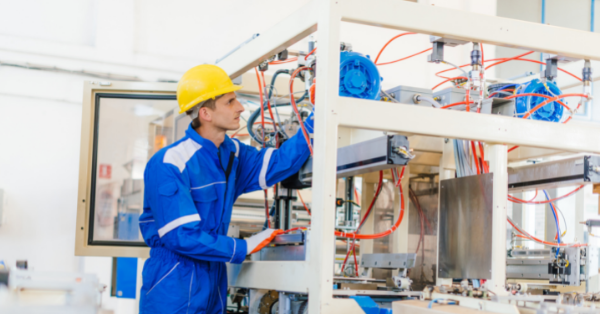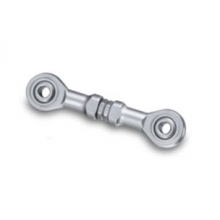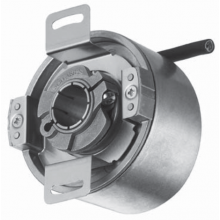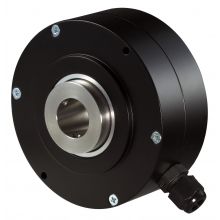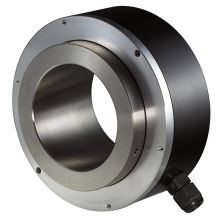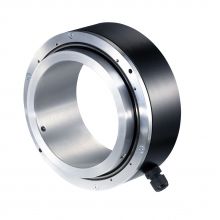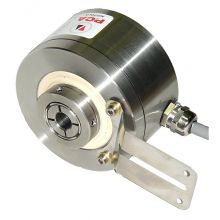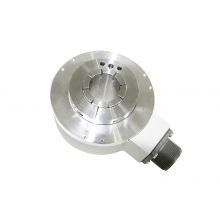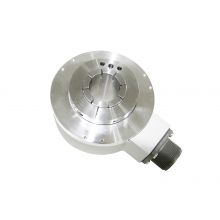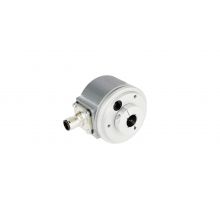Installing Hollow Shaft Encoders
All hollow shaft type encoders are designed to fully support their own weight on the driving shaft.
A simple torsion arm is required to prevent the encoder housing from turning. This arm must only stop rotational movement of the body, in all other directions, a degree of flexibility must be maintained to provide for any run out between the shaft, equipment frame and the encoder housing.
The arm is fixed between a hole provided in the outer edge of the encoder housing and a stationary section of the equipment frame.
Some hollow encoders are provided with a groove in the front face, this is to accommodate a pin fastened to the equipment frame, and this pin is free to move around in the grove on the face of the encoder.
Absolute encoders and incremental encoders not fitted with a zero input will require additional mounting considerations. Torsion arms for both these types require the ability to rotate the shaft of the encoder to allow the electrical zero and the mechanical zero to be mechanically aligned.
Over stress on the bearings will seriously reduce the working life of the encoder.
Some Torsion Arm Examples
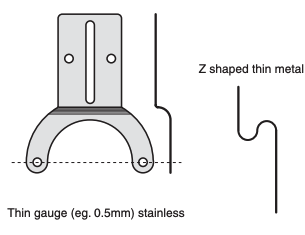
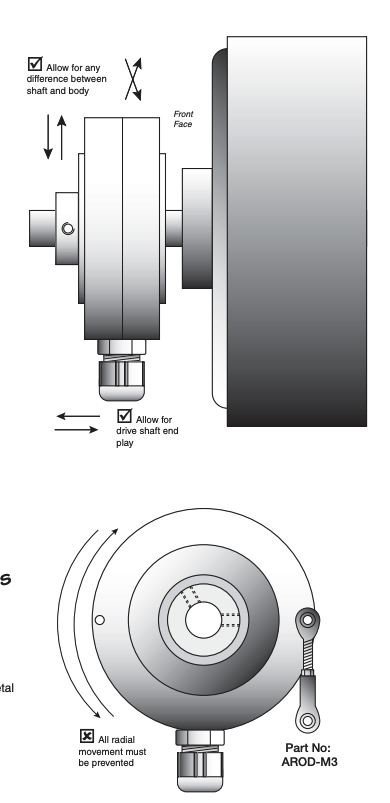
Rod ends with ball fixing eyes mounted in this manner provide an excellent torsion arm. A feature of this approach is the inherent vernier adjustment it provides for aligning the mechanical and electrical zero positions.
For advice on installing encoders please do not hesitate to contact PCA Encoders.
IS THIS INFORMATION USEFUL?
If so, why not share it with your peers and colleagues. Simply click on the blue LinkedIn share icon below.

